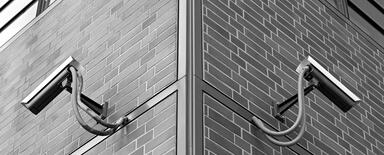
How to Perform a Drupal Security Audit? Overview of the Modules and Libraries
A security audit is the process of identifying security threats that can lead to unauthorised access to content, data leaks, bypassing the security, and other dangers. In the first part of the series on conducting a security audit, we'll focus on the overview of the Drupal module versions that we use at Droptica for this purpose, as well as on PHP and JavaScript libraries.
Drupal security audit
At Droptica, we make every effort to ensure that the solutions we provide are as safe as possible. We use the tools provided by the Drupal community, such as the Security Review module, to optimize the process of detecting the most popular security errors. We also use the Security Kit to make the project we're working on more resistant to attacks. You can learn more about the functionality of these modules in the linked posts, and the information on their operation will be useful in the following parts, in which we'll talk about the Drupal configuration review and code analysis.
Checking the versions of the installed Drupal modules
Updating modules and libraries is the simplest activity that we can perform to improve the security of our application. Drupal provides a view listing all the modules, which additionally indicates whether a given module is up-to-date, and if it isn’t – whether the update contains security fixes.
To check if the modules are up-to-date, go to /admin/modules/update

In the screenshot above, you can see that some of the modules need updating. Of course, in such cases we always recommend that you update all possible modules. If any of the modules contain a security fix, the update is required to ensure a high level of security for the application.
In the case of Drupal, the information about whether a given module has a security flaw is made available to the public when the author of the module releases its patched version. Module authors usually try to hide which code has been changed to patch a security flaw, but this always means that the attacker just needs more time to find a way to cause the bug and exploit it. Time is important, so you should keep track of security updates regularly, not only during a Drupal security audit. As we mentioned earlier, this is one of the simplest steps we can take to ensure a higher level of security for our application.
Patches review
When updating the Drupal modules, you should also check if a patch has been applied to a given module. If so, we proceed as follows:
- We check whether the patch was created by the community and if it concerns a specific issue on drupal.org. If so, we look for the issue that the patch is from. It's possible that the patch has been applied to one of the newer versions of the module. In such a case, we recommend updating the module and removing the patch with the information that the code that fixes the bug or adds a given functionality has been applied to the official, newer version of the module. If the patch hasn’t yet been applied to the newer version of the module, we still recommend updating and testing if the latest version of the patch serves its purpose.
- If the patch wasn’t created by the Drupal community, but is the result of working on the project, we still recommend updating the module. In this case, however, ensuring the correct operation of the patch lies with the people responsible for the custom code of the project. After updating, you should check whether the patch works as intended. If not, we recommend introducing appropriate fixes to the patch which will ensure its correct operation on the latest version of the module.
PHP libraries review
The next step will be reviewing the used PHP libraries. To list them, we can use the composer show command or the local-php-security-checker package. We recommend the latter solution because it significantly speeds up the process.

Result of the composer show command.
If you choose to install the local-php-security-checker package, follow the guidelines in the README.md file.

Result of the scan using local-php-security-checker.
There's also the little-known Drupal Composer Security Checker module that uses the security-checker package. Currently, this module doesn't fulfill its task and the security-checker package itself isn't actively developed (since January 2021), therefore we'll focus on the local-php-security-checker package itself. If you find a security risk, our recommendation will be to update the library, of course – as in any case. An audit of the PHP libraries should be carried out regularly, the same as in the case of the Drupal modules.
JavaScript libraries review
The next step will be to check if the used JavaScript libraries are up-to-date and if they contain security fixes. To do this, you should review the library directory and the used package.json files.
In the case of the library directory, you need to check the version manually. In the case of package.json, we use the npm-audit command.

Result of the npm-audit command
The npm-audit command will list all known vulnerabilities, determine the threat level, package, dependencies, package path, and show a link with information about the vulnerability.

If you find a vulnerability, as always we recommend the update. JS library scans should be performed routinely, more often than a comprehensive security audit.
Improving the Drupal security - further steps
In this part of the Drupal security audit cycle, we've learned how to check whether the used versions of the modules and libraries are up-to-date and don't contain known security bugs. We also understand how to proceed if there is a patch available for a module – both when the patch comes from the Drupal community and when it was prepared by the developer working on the application.
Acquiring the knowledge provided in this post is the easiest way to improve the security of your application. Checking the versions of the used solutions is the first step that we perform during a security audit - our Drupal support team recommends periodic checking for updates. In the event that an update containing security fixes is released, we recommend that you perform an update as soon as possible.
In the next part of this series of articles, we'll get to learn more about the Drupal configuration aimed at increasing the security of our application. We'll also learn how to reduce the number of attack vectors and we'll find out more about the modules that'll help us with this.










